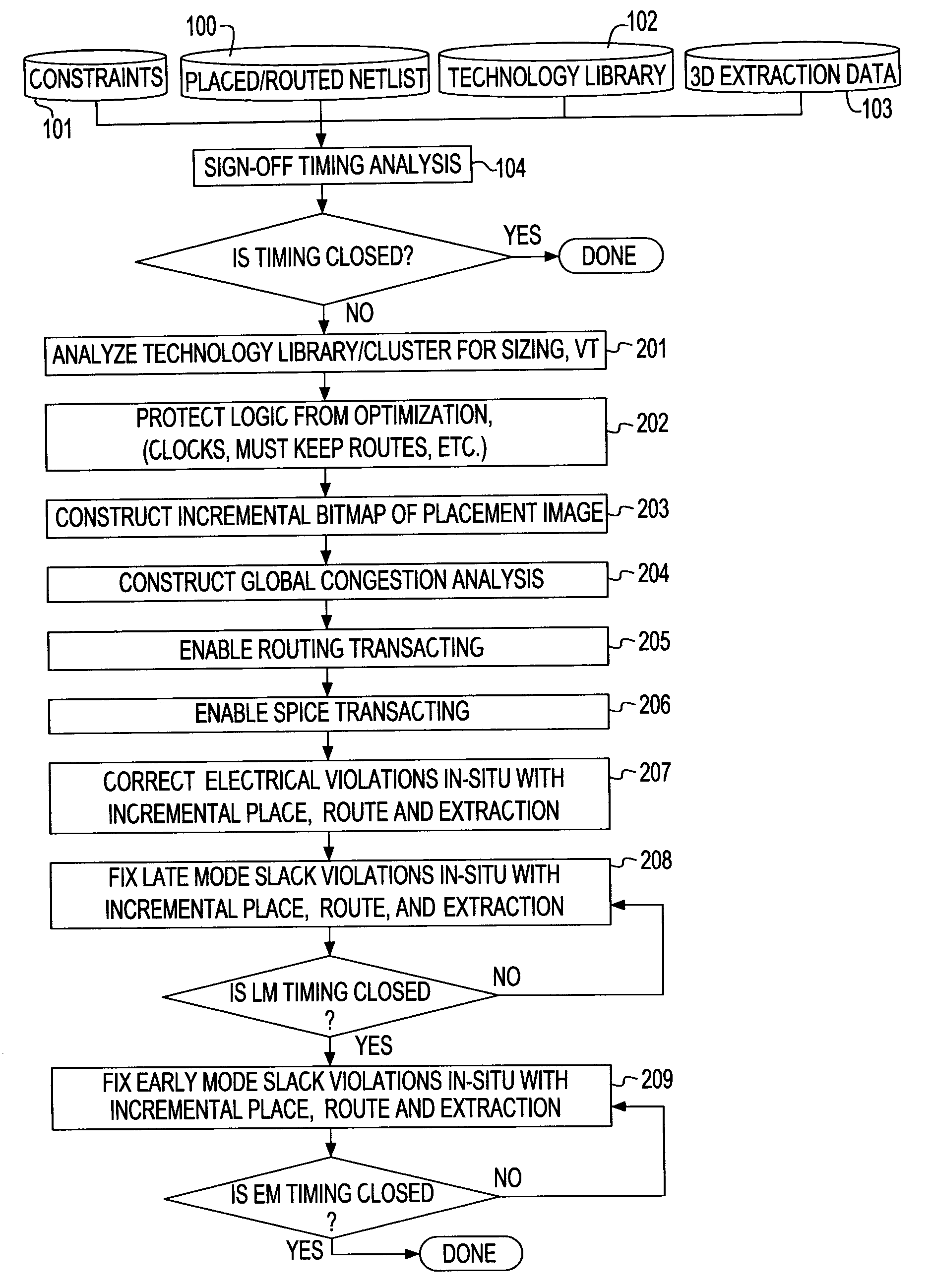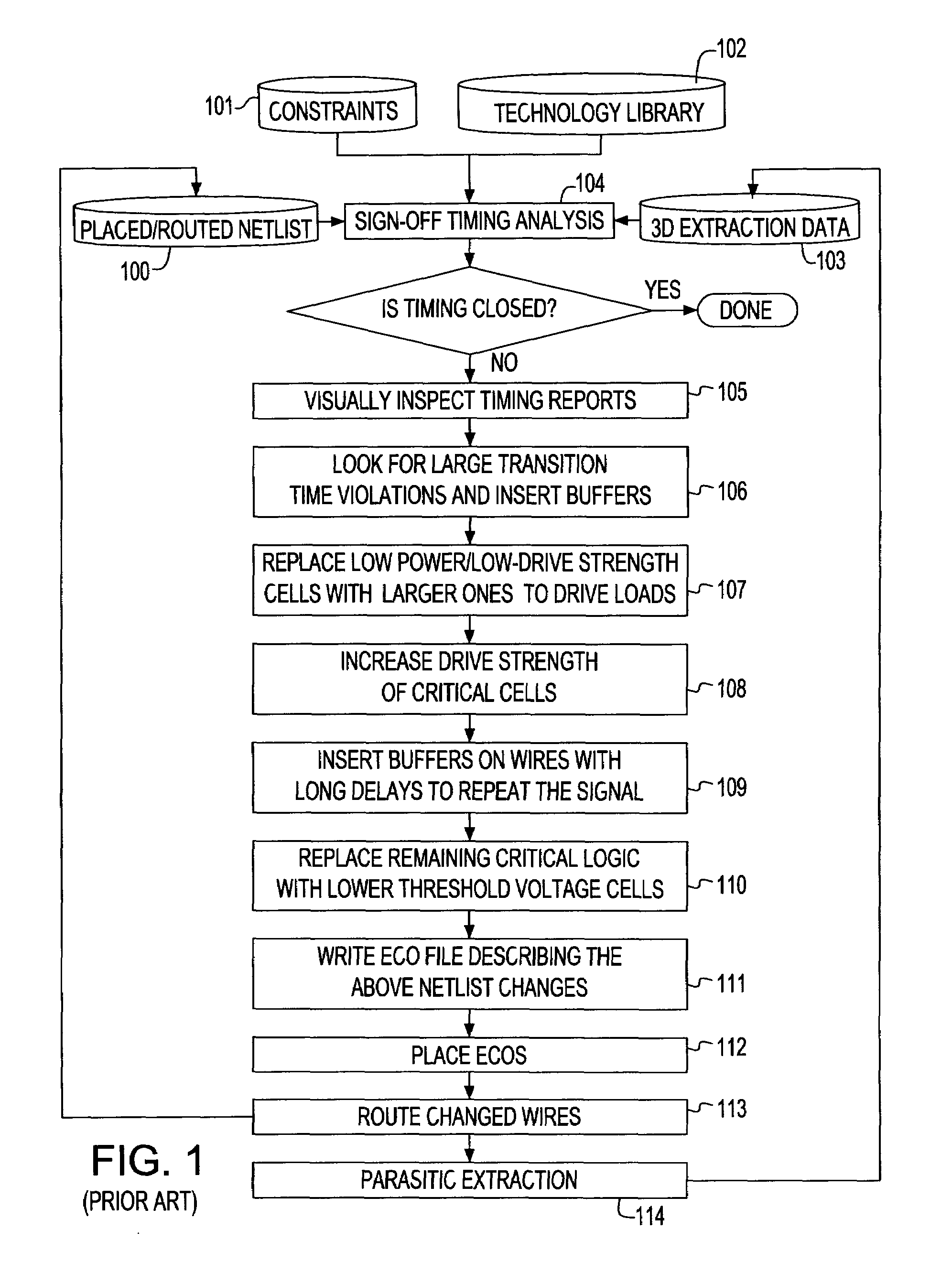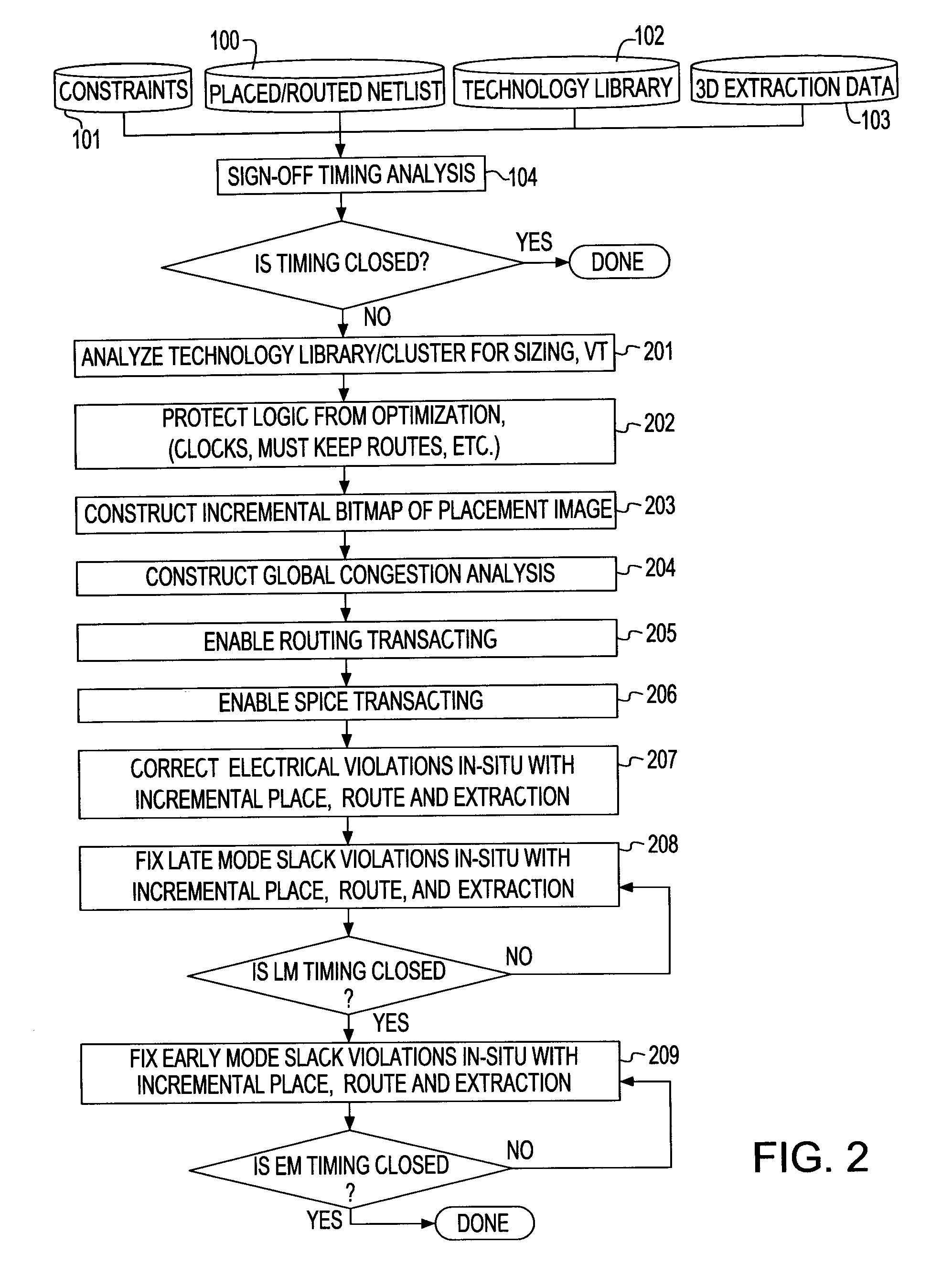System and method for sign-off timing closure of a VLSI chip
a technology of vlsi chip and timing closure, which is applied in the direction of cad circuit design, program control, instruments, etc., can solve the problems of time-consuming and difficult timing closure convergence, conventional process further suffers, and the methodology fails to accurately correlate the timed logic representation of the design to the physical characteristics of the design, so as to reduce variability effects, minimize placement and routing (i.e., wiring) disruptions, and high degree of accuracy and confiden
- Summary
- Abstract
- Description
- Claims
- Application Information
AI Technical Summary
Benefits of technology
Problems solved by technology
Method used
Image
Examples
Embodiment Construction
[0057]The present invention and the various features and aspects thereof are explained more fully with reference to non-limiting embodiments that are illustrated in the accompanying drawings and detailed in the following description.
[0058]In the description hereinafter described, the following definition of terms will be used.
[0059]Late mode—establishes the longest delay, or critical path, which sets the maximum speed at which the VLSI chip can run.
[0060]Early mode—determines the conditions that are necessary for a correct operation of the chip when fast paths resulting from signals arriving before expected are found to exist.
[0061]Transition time—defines the time it takes for a signal waveform to travel from 10% to 90% of its final value. It is also referred to as slew time.
[0062]Legal placement—defines a condition where every circuit of the design is placed according to placement rules and constraints. A circuit must be placed such that its occupying area does not overlap that of ...
PUM
 Login to View More
Login to View More Abstract
Description
Claims
Application Information
 Login to View More
Login to View More - R&D
- Intellectual Property
- Life Sciences
- Materials
- Tech Scout
- Unparalleled Data Quality
- Higher Quality Content
- 60% Fewer Hallucinations
Browse by: Latest US Patents, China's latest patents, Technical Efficacy Thesaurus, Application Domain, Technology Topic, Popular Technical Reports.
© 2025 PatSnap. All rights reserved.Legal|Privacy policy|Modern Slavery Act Transparency Statement|Sitemap|About US| Contact US: help@patsnap.com



